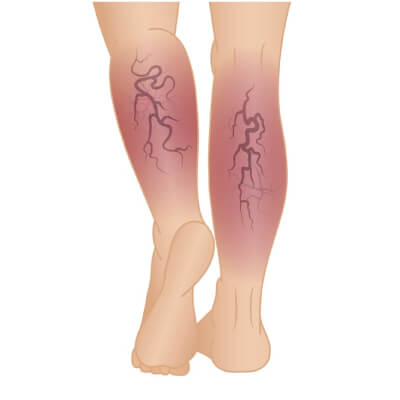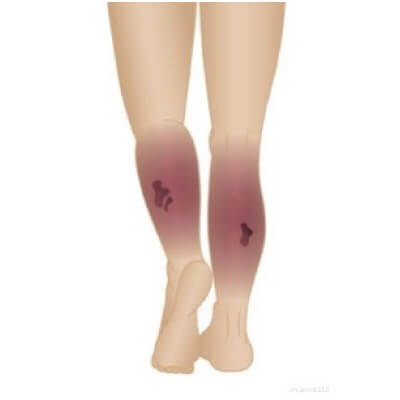Conditions we treat
Age shouldn’t define you, and obstacles with your vascular health shouldn’t limit you. Dr. Messner cares for patients from around the world in a safe, friendly environment with a high priority on personalized care.
Peripheral Arterial Disease (PAD)
PAD, also known as peripheral vascular disease, is a very common medical condition in which plaque buildup due to atherosclerosis makes it difficult for blood to flow through the arteries. PAD primarily affects the legs, but can also damage arteries in the kidneys, abdomen, feet, ankles, pelvis, hips, buttocks, and arms. Watch the video below for more information on Peripheral Artery Disease.
Watch the video below for more information on Peripheral Artery Disease.
Carotid Artery Disease
Carotid Artery Disease is also called Carotid Artery Stenosis. The term refers to the narrowing of the Carotid Artery when fatty deposits (plaques) clog the carotid artery that deliver blood to your brain and head (a process called atherosclerosis). Risk factors include age, smoking, high blood pressure, diabetes, obesity, and an inactive lifestyle.
Among the main symptoms are difficulties speaking and understanding, sudden dizziness or loss of balance, and intense and sudden headaches. The treatment consists of eliminating the blockage of the Carotid Artery and the most common way to do it is through a minimally invasive surgery.

Abdominal Aortic Aneurysm
An Abdominal Aortic Aneurysm is a bulging area that occurs when the artery that travels from the heart to the chest and abdomen becomes weak and inflamed, and blood clots can form as a result of an aneurysm. Clots can prevent blood from reaching muscles, tissues, and organs, as well as permanent tissue damage and amputation of limbs. Abdominal aortic aneurysms occur most often in people older than 65 years. Early symptoms include sudden, sharp pain in the upper back that spreads downward, and a cough. Currently, the only solution is minimally invasive surgery.

Varicose Veins
Varicose Veins are one of the most common adult disorders, with one in five adults experiencing them at some point in their lives. From a medical standpoint, the progression of varicose veins can lead to health problems such as persistent pain, clot formation, and skin inflammation. From an aesthetic point of view, these veins can cause insecurity due to their appearance.
Varicose veins are twisted, enlarged veins that appear under the skin. Although varicose veins can appear anywhere on the body, they usually appear on the legs. Varicose veins are often unsightly and even painful.
There are several ways to treat varicose veins, such as using a vein laser.

Spider Veins
Twist and turn visible veins are commonly known as Spider Veins, appearing in hues of red, blue, or purple. This dilation of small blood vessels happens beneath the skin and can show up anywhere on the body, but they are seen most frequently on the face and legs.
Embarrassment and decreased confidence may come along with Spider Veins, which are often seen as a simple aesthetic issue. These veins can make you feel dull and achy, and they could even indicate a more serious venous illness. Discover all the essential information you require about the elimination of spider veins.

Chronic Venous Disease (CVD)
Chronic Venous Disease is a persistent condition caused by abnormal or diseased veins. The range of venous issues that can result in CVD is vast; and symptoms vary from cosmetic to debilitating and constant pain.
Fortunately, en Messner Vascular Institute can effectively address and treat this ailment of yours.

Deep Vein Thrombosis (DVT)
When a blood clot develops in your deep veins, it’s referred to as deep vein thrombosis (DVT). Leg pain and swelling are typical signs, but it can also happen without any symptoms at all.
Immediate treatment is crucial for this grave ailment, as clots have the potential to migrate through the veins obstructing the lungs, resulting in a pulmonary embolism.
The most widely used treatment for this condition is Phlebectomy, which consists of making small cuts on both sides of the vein and extracting the damaged vein from one side.

LEG SWELLING
Leg swelling is a common symptom that can be caused by a variety of underlying conditions. It is characterized by an abnormal buildup of fluid in the tissues of the legs and can range from mild to severe. Some common causes of leg swelling include injury, edema, blood clots, infections, heart failure, kidney disease, and liver disease. The specific symptoms associated with leg swelling may vary depending on the underlying cause, but may include pain, redness, warmth, and tenderness in the affected area.

LYMPHEDEMA
Lymphedema is a chronic condition characterized by the accumulation of lymphatic fluid in the tissues, typically in the arms or legs. It can result from damage to or malformation of the lymphatic system, surgery, radiation therapy, cancer, infections, or congenital conditions. Symptoms may include swelling, tightness, limited mobility, discomfort, and skin changes.

